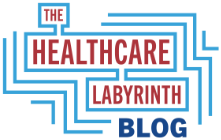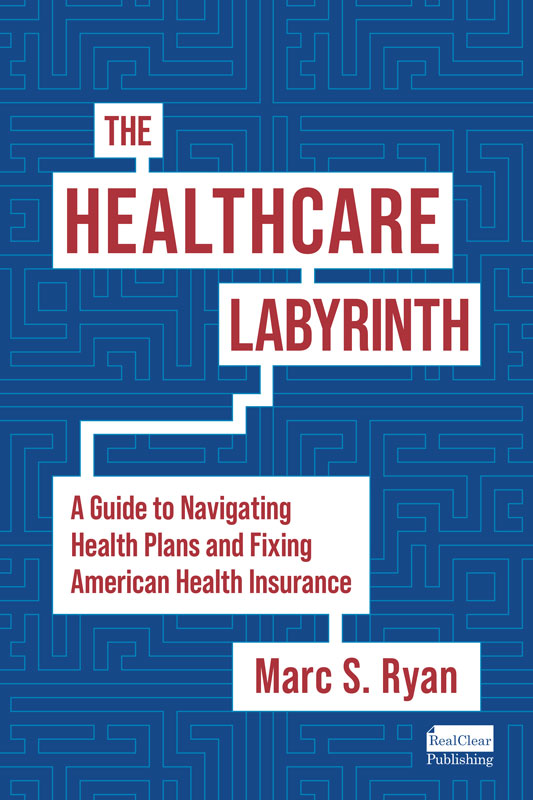In a recent blog, I made the case that Election 2024 will come down to a handful of states and districts/counties deciding both the presidency and control of the House of Representatives. In the Senate, almost every competitive race has an incumbent Democrat or open Democratic seat. Everything would have to go right for them to maintain control of the Senate.
I also stated that I think healthcare could be a bit of a sleeper issue even though it theoretically ranks low on the list of Americans’ priorities this year. I say theoretically because pocketbook issues do rank high and healthcare is a key component of that. More important, these swing states and areas tend to have independents and more moderate voters who will decide outcomes. They may indeed prioritize healthcare more than the rest of the nation. See my recent blog at this link for my election analysis and a recent Kaiser Family Foundation (KFF) poll that shows how healthcare issues have a “tri-partisan” resonance (Democrat, Republican and independent.): https://www.healthcarelabyrinth.com/election-update-and-the-potential-role-of-healthcare-issues/
My main reason for writing is that I think healthcare reform truly could be a bipartisan issue. So why not raise it as part of the Election 2024 debate.
Yes, there would be plenty to hate in it on each side of the aisle. But healthcare reform could give each party something to celebrate. It, too, could put our healthcare system on a more cost-effective and quality course.
Here is my modest proposal, much of it from my book, The Healthcare Labyrinth (available at this site).

https://www.healthcarelabyrinth.com/book/
The facts
- A private health insurance system can work. There are three types of systems in the developed world – socialized medicine, single payer, and private affordable universal access. All have shown the ability to be cost-effective and have high quality. Indeed, in a recent Commonwealth Fund analysis of healthcare systems in the developed world, all three systems were represented among the top 5 performing countries for efficiency and outcomes. We have not adopted any of these approaches and have a massively fragmented system without true affordable universal access.
- As of 2022, we spent 17.3% of our gross domestic product (GDP) on our healthcare system, while most other developed nations spend between 8.8% and 12.8% of GDP. Per capita spending comparisons tell a similar story. Overall, this makes us anywhere from 35% to 97% more expensive than other developed countries. The Organization for Economic Cooperation and Development country average is 9.6% of GDP; thus, the U.S. spends 80% more on healthcare.
- Our quality and efficiency are ranked dead last in studies of developed countries’ healthcare systems. We are so bad that we are an outlier against those developed countries registering the lowest.
- A public-private accountability system is emerging and is a positive for the nation. It leverages the oversight of the Centers for Medicare and Medicaid Services (CMS) and other federal and state agencies with the innovation of private health plans.
- A private model fits America and is far superior to a single payer Medicare for All model.
- The American public across party lines support access to healthcare for citizens disenfranchised from affordable access in the employer world. This includes Republicans.
My proposal
- America should focus on three areas – driving affordable universal access, reforming price, and pivoting to care management from our obsession with utilization management. All three of these are necessary to focus on upfront wellness and prevention and bend the cost curve.
- Price transparency, site neutral payments, value-based payments and care, consumerism, and interoperability are all a must in our system.
- We should adopt a uniform national and/or regional model for healthcare pricing as other nations do. This could be across all healthcare lines of business. Then, health plans would compete on quality and satisfaction. Administrative costs would drop dramatically.
- We also have to tackle drug price reform. The Inflation Reduction Act’s Medicare drug price negotiations provide a foundation that mirrors what other developed countries do for their entire systems.
- America is obsessed with utilization management or prior authorization, where gates are put up in front of certain services and only allowed if authorized beforehand by health plans. This certainly has a role in efficient healthcare, but it should not be the main focus. Indeed, far more could be saved if America invested in wellness, prevention, and true care management. In this model, health plans would seek to understand members’ risks (clinical and socio-economic) and drive down costs by constantly intervening in and managing care and driving quality outcomes. This includes stronger health and wellness engagement as well as oversight of those with disease states. In essence, invest in true primary care.
- We do not have to abandon employer-sponsored coverage. It is relatively popular with Americans. But we should over time create one master social-safety-net public insurance program with private managed care delivery to ensure affordable access for Americans who do not have consistent access to affordable employer coverage. This prorgam would include sliding-scale subsidies to help those in need afford premiums and cost-sharing. In the meantime robust Medicaid, children’s health, and Exchange coverage is key. The tenets of the Affordable Care Act (ACA) need to be preserved.
- We need to adopt an aging policy to ensure seniors have affordable access to both medical and long-term care. Aging in America threatens to cripple not only our Medicare and Medicaid systems but family budgets in general.
What could be saved?
Let’s look at the sheer cost difference. In 2022, we as a nation spent $4.5 trillion on our healthcare system. If we as a country were able to reduce our healthcare spending as a percentage of GDP from 17.3% to as low as 8.8% and no more than 12.8%, when complete that would free up between about $1.2 and $2.2 trillion annually for the economy.
What would be in it for Republicans?
The GOP constantly complains about the non-competitiveness of business. To former President Trump’s credit, the United States did lower the corporate tax rate from 35% to 21%. Admittedly, due to loopholes and tax credits, many large firms paid considerably less than that but the realignment brought all businesses in parity with the rest of the world (especially for our small businesses). Still, American businesses carry an enormous burden providing employer-sponsored healthcare coverage. Such costs save corporation’s taxes through deductions, but healthcare still is a considerable net cost for business. This is not the case in other developed countries.
In addition, business health insurance costs are even higher because providers demand enormous rates in employer coverage due to lower payments in Medicare and Medicaid.
All of it comes together to undermine American competitiveness abroad. My proposal would significantly address the cost of healthcare generally and the cost shift specifically. Republicans would be able to ballyhoo that businesses would be far more competitive.
What would be in it for Democrats?
While Republicans would object to spending all of the GDP savings, a strong case could be made to reinvest a piece of the savings in needed areas of healthcare and society in general. Social spending could be enhanced, in part to address social determinants. The COVID pandemic showed that our public health infrastructure is woefully inadequate. We need more government research into disease and drugs. We need to invest in our aging infrastructure.
A piece of the savings could be invested in an on-demand and high-tech system
Universal access, care management, and price rationalization would save consumers considerably. But it might be that we keep some of the spending to craft a unique American affordable universal access system. While we do see quality overall in other systems, it is also true that care is rationed in all sorts of ways. Two key ones include access to technology and drugs as well as on-demand care. America could decide to be a small outlier in terms of healthcare – just not an ugly one.
Political views on reform are a barrier
The complexity of all this is that the two parties would need to compromise. Most congressional Republicans view health insurance as a commodity that someone can buy as they become rich enough. Few moderate Republicans remain and the right of the party’s “pull yourself up by your own bootstraps” philosophy prevails. Where is the compassion in this stand?
At the same time, many Democrats seem to endorse excess and would create an unaccountable healthcare system. It would be unaffordable. Progressives right now dwarf moderate views in the party.
But could there be enough in my proposal to get people to the table? It would take a lot of political courage and strong leadership.

Additional reading:
https://www.cms.gov/files/document/highlights.pdf
https://www.commonwealthfund.org/series/mirror-mirror-comparing-health-systems-across-countries
#healthcare #healthcarereform #election2024
— Marc S. Ryan





